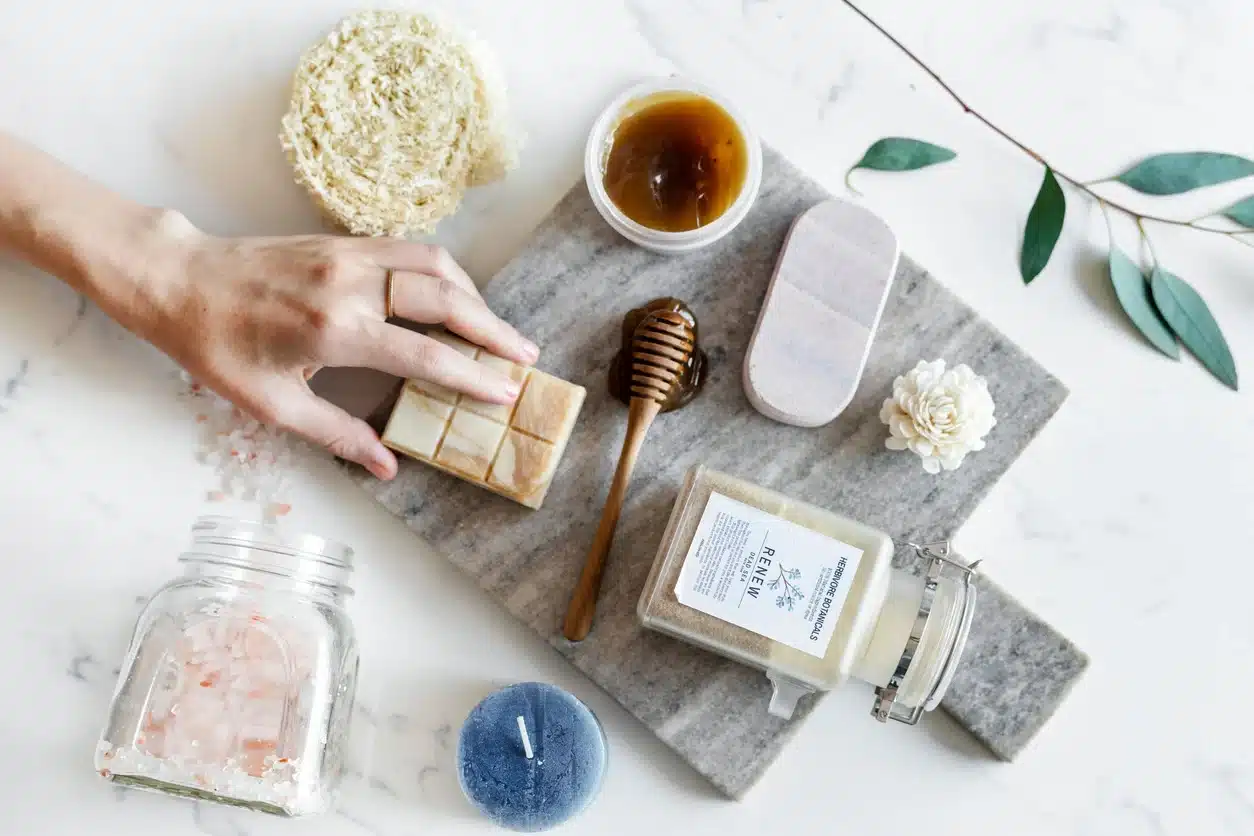
radiant-blog-first-slider_01
How to Market Your Health & Wellness Offerings in 2020 [Guide]

The health and wellness industry has grown in consumer demand, taking the internet by storm. Dominating everything from beauty to food to lifestyle, wellness is quickly becoming a trend that affects nearly all aspect of our lives as consumers.
Even historically-stable industries and large brands are feeling the effects of this health and wellness take over, as innovative and new health brands emerge. For example, Nestlé and Kraft both admitted that their growth was hindered in 2017 due to the growing demand for healthier options.
This increase in demand and innovative solutions presents a unique opportunity for brands to gain a foothold in the market, but it also means that competition is becoming increasingly fierce. Consumers are bombarded with ads, videos, social posts, influencers telling them what to use, and more.
So, how do you get your health and wellness products and services to stand out above the noise?
We’ve outlined five ways you can turn your health & wellness brand’s promotion and marketing investment into tangible results in 2020.
Email is often underrated – and foolishly claimed to be ‘dead’ by some – but it is seriously essential to communicating with your audiences.
You can use email to connect with your existing customers/patients and prospects to communicate brand updates, new offerings, benefits and more. Email is still one of the easiest (and with the surge of ‘pay to play’ on social platforms, most cost effective) ways to stay in front of your audience on a larger scale. Draft the email, copyedit, review and push send. Voilà!
While we argue that email is one of the most effective channels for staying in front of your customers, we also understand that it can take some work to really be effective.
We recommend businesses save themselves some time and headache by setting up automation like HubSpot workflows where they can.
Posting to your blog regularly? Make sure you have an RSS email created to send out new posts to your email database.
Have a download available on your website? Make sure you have a follow up email in place thanking them for downloading, delivering the resource and even providing them the ‘next step’ call-to-action.
Automation is certainly not the whole story though. In order for your emails to be most effective the content needs to be perfection ( ). Creative, engaging, audience-appropriate and action-oriented content is key.
Pro Tip: Do you struggle with writing content, finding fresh images, and setting up email automation? Good news! We’re HubSpot certified and create smart, engaging content for health & wellness brands every single day. Click to find out how we can take the stress of marketing off your plate.
One of the biggest mistakes businesses make when marketing their health and wellness products is targeting too broad of an audience. When we dig into the reasoning behind this, many business owners are afraid of turning off/away potential buyers by creating highly targeted content for a specific type of person. Or they simply feel that their offerings are ‘good for everyone’. While that may be the case, you will never see the growth you want to see by being ‘good for everyone’ when you could instead be ‘super f*cking great for some’. That match, those Brand Companions, are what will make a booming business.
The more you try to connect with everyone the less inspiring and engaging your marketing campaigns and messaging will be.
And you don’t want to connect with no one, right?
Instead figure out who your Brand Companion is and create messaging, content, images, and branding that speak directly to them. Don’t be afraid to send specific marketing messages directly to niche segments of your target audiences. The connections you make will prove to be more valuable than general, overarching marketing messages (especially when these brand advocates start doing your marketing for you!).
The same advice applies to your email database. Make sure you have a clean, engaged list. If half of your emails are bouncing or a third of your contacts have never opened a single email, it makes it much more difficult to appropriately gauge the success of your content, calls-to-action and offerings. Clean that database up by deleting all hard bounces and sending out a ‘reactivation/breakup campaign’ to those who haven’t opened anything in 6 months or longer to give them one last chance to stay subscribed.
Pro Tip: Our Brand Companion eBook can help you figure out exactly who you need to target in health and wellness. Click to download your FREE eBook right now.
Social media is constantly changing but it’s also consistently an important piece of your health and wellness marketing strategy. Each year you should reevaluate your channels to ensure your pages are updated with the most relevant information about your business and that you’re leveraging all of the features available to you.
Refresh your cover & profile images periodically across all platforms to give yourself a fresh, updated look.
If you are advertising on social (and at this point in the social game you really should be), be sure to use custom audiences to get your message to the right people. Custom audiences can include customer lists that you upload, lookalike lists that mirror the demographics and behaviors of your customer lists, smart lists created using Facebook targeting options and more.
Take your advertising game to the next level by using retargeting ads. These ads require the Facebook Pixel to be installed on your website first, but then open the door to incredible opportunities to reengage visitors that have already expressed an interest in your brand with highly targeted content and offerings. As a result your ads will be delivering to an audience that has a much greater likelihood of converting into paying clients/patients.
Pro Tip: Become master Facebook marketers with our free Facebook guide. Click here to download The Ultimate Guide to Facebook Success.
Speaking of social media campaigns, social influencers are becoming a go to resource for businesses big and small. Leveraging influencers and their audiences can be a very effective way to reach new individuals that may not have otherwise been exposed to your offerings.
If you can connect with social media influencers who will try your products or services, share their experience and encourage their followers to check you out, your online presence will soar! This strategy can be particularly attractive and effective for smaller brands that have their business deeply rooted in core values that align with influencers they identify.
How do you find the right influencers for your brand?
Influencers don’t have to be the Kim Kardashians of the world. You can engage micro-influencers with only a few thousand followers that have highly-engaged audiences and values lifestyles and content that aligns with your brand.
Sites like BuzzSumo can help you identify social media accounts in the health and wellness industry with large followings. Create a list of your target accounts and reach out to social media influencers with an offer to send samples of your most popular health and wellness products in exchange for a review and link to your site. Here is some swipe copy you can use!
Hello First Name! We love your feed and can tell you value . We wanted to see if you’d be interested in joining our influencer program to receive perks (like a free or a ) in exchange for posting about our service/product. If interested you can email us at . We look forward to hearing from you!
Although this seems like a no brainer (Since 60%+ of online traffic is generated via mobile devices), we still regularly see websites that are not optimized. Many companies have converted to themes that adapt to all device sizes (which is what we recommend) compared to having separate desktop and mobile sites (ouch) or no mobile option at all (yikes!). But while many of these sites are viewable on mobile they’re still not optimized for mobile. The number one issue we see? Site speed. If your mobile site takes more than 2-3 seconds to load there’s a huge chance you’re going to lose that visitor.
If you’re using email marketing, it’s even more important to make sure you’re mobile optimized, since on average mobile devices account for 66% of email opens.
Marketing doesn’t have to be a mystery. Use these steps as a checklist for your health and wellness site and marketing campaigns to get on the right track for success.
Are you looking for creative and cost-effective ways to develop a successful marketing strategy? Click here to download our FREE marketing guide to get a step-by-step guide to creating an inexpensive marketing plan that works.
Resources:
https://www.outboundengine.com/blog/top-marketing-ideas-for-health-and-wellness-businesses-in-2016/
https://yourbusiness.azcentral.com/sell-products-related-wellness-24856.html
https://newsroom.fb.com/company-info/
https://smallbiztrends.com/2014/07/online-traffic-report-mobile.html